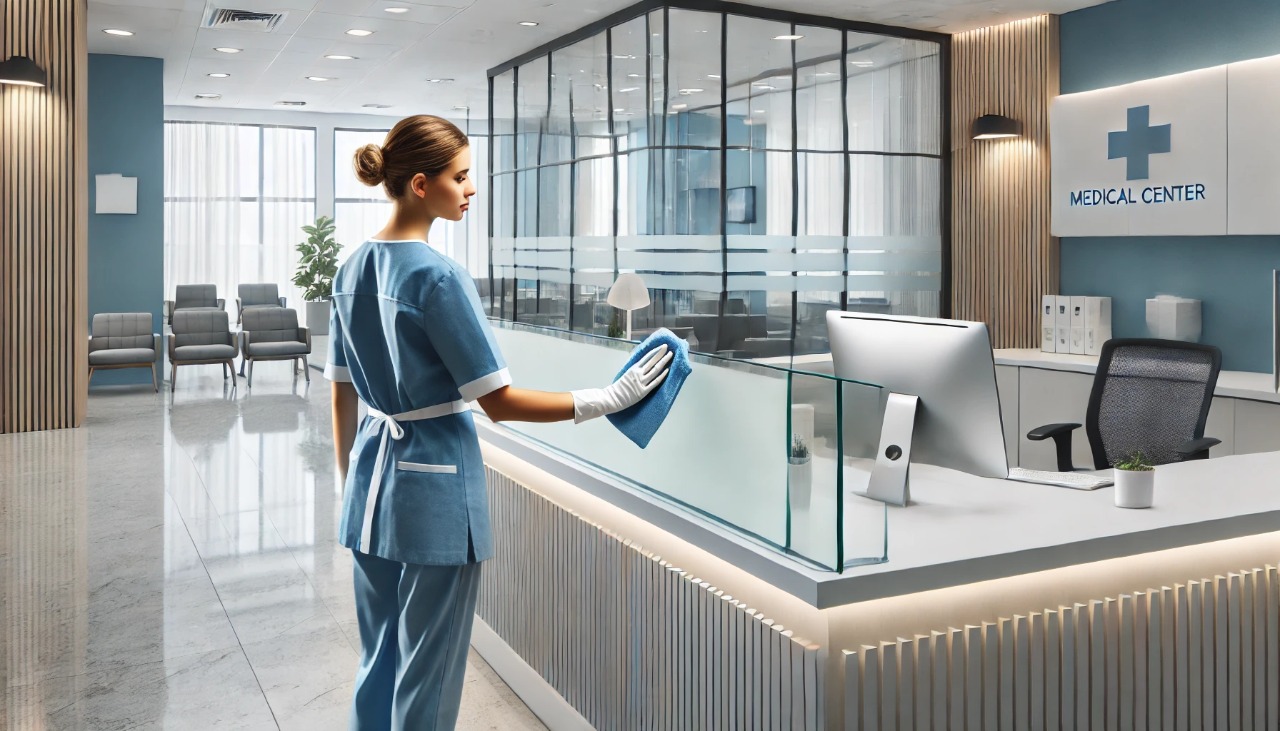A clean and hygienic medical environment is crucial for both patient and staff safety. Medical centres, where the health and wellbeing of individuals are the top priority, must maintain high standards of cleanliness at all times. With increasing awareness of infection control and the spread of disease, ensuring a properly sanitised medical centre is not just a necessity but an ethical responsibility. Here are some top tips for achieving a safe and clean medical environment.
1. Implement a Thorough Cleaning Schedule
A cleaning schedule forms the backbone of any medical centre’s cleaning protocol. Regular cleaning is necessary to reduce the risk of infection and maintain an organised and professional environment. The key is to break down the cleaning tasks by frequency and urgency.
-
Daily Cleaning Tasks: These should include disinfecting common areas, cleaning patient rooms, wiping down medical equipment, and sanitising high-touch surfaces like door handles and light switches.
-
Weekly and Monthly Tasks: Tasks such as window cleaning, dusting hard-to-reach surfaces, deep cleaning restrooms, and ensuring air ventilation systems are clean should be done regularly but less frequently.
By adhering to a set schedule, you can ensure that no area is overlooked. For example, when opting for professional medical centre cleaning in Tauranga, it’s important to ensure their cleaning plan includes both daily and periodic deep cleaning tasks.
2. Focus on High-Touch Surfaces
In a medical centre, high-touch surfaces are where germs and bacteria are most likely to spread. These surfaces are constantly in contact with patients, visitors, and staff, making them the perfect breeding ground for harmful microorganisms.
Ensure that cleaning these high-touch areas is a priority. Some common high-touch areas in medical centres include:
-
Door handles
-
Light switches
-
Reception counters
-
Waiting room chairs
-
Medical equipment handles
Sanitising these areas regularly will help prevent cross-contamination and reduce the risk of hospital-acquired infections (HAIs).
3. Specialised Medical Equipment Cleaning
Medical equipment can easily harbour germs and bacteria, making it essential to clean and disinfect them frequently. This includes not just the patient-facing equipment but also staff-used devices, such as computers, phones, and other items used in administrative tasks.
-
Ensure the use of hospital-grade disinfectants: Medical centres should only use approved, strong cleaning agents designed to kill harmful pathogens without damaging the equipment.
-
Clean reusable equipment after each use: Medical tools and instruments like stethoscopes, thermometers, and blood pressure cuffs should be cleaned after every patient interaction.
Proper cleaning and sterilisation of medical equipment prevent the spread of infections and ensure patient safety.
4. Maintain a Clean and Sanitised Waiting Area
The waiting room is often the first area patients interact with, and a well-maintained, clean waiting area not only promotes a positive experience but also prevents the spread of germs. In a medical centre, the waiting room can be a hub of germs as numerous patients and visitors pass through.
Some tips for maintaining a clean waiting area include:
-
Frequent sanitisation of chairs, magazines, toys, and other shared objects.
-
Use of air purifiers to reduce airborne pathogens.
-
Window cleaning to ensure the area feels fresh and welcoming while maintaining hygiene.
Patients will feel more at ease knowing they are entering a well-maintained environment where cleanliness is a priority.
5. Implement Effective Waste Management
Proper waste disposal is an often-overlooked aspect of medical centre cleaning. Medical centres produce a variety of waste, including hazardous materials, sharps, and regular rubbish. It’s essential to ensure each type of waste is disposed of appropriately to prevent contamination.
-
Sharps and medical waste: Use designated bins for disposing of needles, syringes, and other medical waste. Ensure they are disposed of by certified waste management services.
-
General waste: Regular office rubbish should be removed daily, and bins should be kept away from patient areas.
Effective waste management keeps the environment clean and helps prevent infection risks from improper disposal.
6. Ensure Proper Ventilation and Air Quality
Ventilation plays a vital role in maintaining the cleanliness of the air in a medical environment. Poor air circulation can allow airborne pathogens to thrive and spread.
-
Regularly clean air vents: Accumulated dust and dirt in the HVAC system can affect air quality. Regular air duct cleaning is vital to maintain good ventilation.
-
Install HEPA filters: High-efficiency particulate air (HEPA) filters can capture airborne pathogens, ensuring cleaner air in the medical centre.
Additionally, natural light can help reduce the build-up of germs. Regular window cleaning ensures that natural light can flood into the centre, which not only brightens the space but also contributes to a cleaner environment.
7. Choose Professional Cleaning Services
While in-house cleaning staff can handle basic cleaning tasks, hiring a professional service can ensure your medical centre is cleaned to the highest standards. If you’re in Tauranga, opting for medical centre cleaning in Tauranga will provide expertise in the particular needs of a healthcare facility.
A professional service is more likely to:
-
Use specialised cleaning products suitable for medical environments.
-
Provide highly trained staff with expertise in infection control and hospital-grade sanitation practices.
-
Offer flexible cleaning schedules to ensure that high-traffic areas are cleaned during quieter times to avoid patient disruption.
Conclusion
Creating a safe and clean medical environment requires ongoing attention to detail and a proactive approach. By implementing a thorough cleaning schedule, focusing on high-touch surfaces, using professional services, and ensuring effective ventilation, your medical centre will stay hygienic and safe for both patients and staff. Don’t overlook the importance of proper cleaning in healthcare settings—it’s key to fostering a healthy environment for everyone involved.


